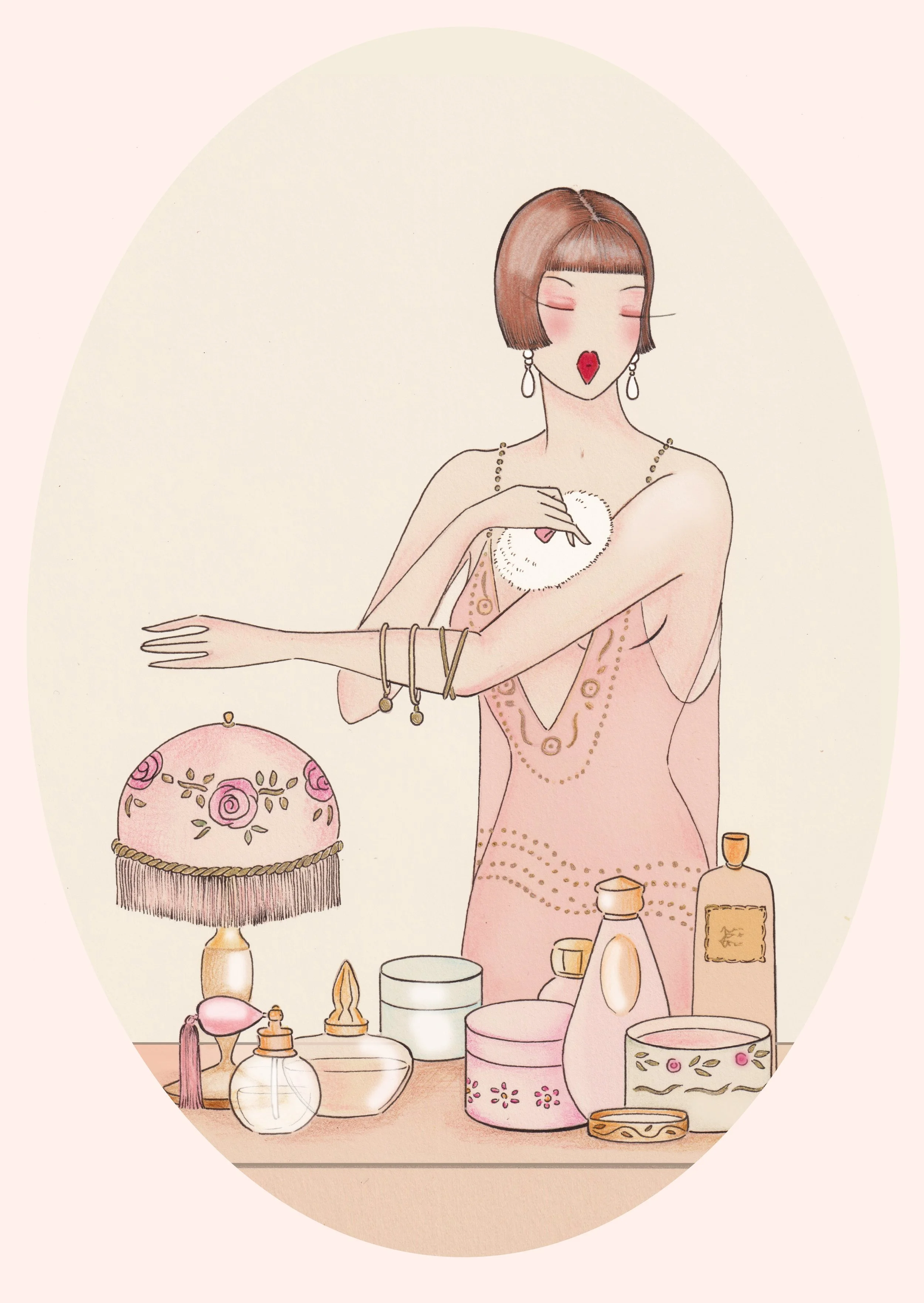Amalia Russiello, the illustrator and creative mind behind Madame Dabi, is an Italian artist with a degree in Art History from the University of Naples Federico II.
After completing her studies, she decided to dedicate herself entirely to illustration, developing a visual language deeply rooted in her affinity with the glamour of the past.
Her artistic vision was further shaped by a formative year in Paris, where she began to define her distinctive Boudoir Aesthetic.
Her style blends the elegance of Art Déco with the playful seduction of Rococo, celebrating and empowering women through their uniqueness and sensuality as expressions of strength and individuality.
Her illustrations have appeared in Le Figaro, Vogue Korea, and Dazed Beauty, and she has collaborated with brands including Ladurée, Empress Mimi, Playful Promises, and Scarlett Gasque.
Her works are part of private collections across Europe, the United Kingdom, and the United States.
Today, through Madame Dabi Boudoir, she continues to reinterpret the Boudoir Art with a contemporary eye for the modern woman.
THE BOUDOIR ART
Amalia Russiello is one of the very few Boudoir Artists of our time.
By Boudoir Art we mean a true artistic movement that originated in the early 1900s, celebrating female beauty in all its forms.
In Paris during the 1910s, Boudoir Art reached its peak of popularity influencing fashion, illustration and advertising. Newspapers and luxury maisons commissioned artists to depict women who embodied the new ideals of freedom, style, and sensual confidence.
The women of that era were changing: they had new ambitions, new desires, and needed figures who could represent them beyond traditional roles.
At the beginning of the century, movements for women’s rights were emerging, women who loudly claimed equality with men in every area of social life and the chic Parisian women of the time — the flappers — became symbols of this transformation. They smoked in public, wore their hair à la garçonne, dressed with daring necklines, danced bare-legged and chose their lovers for pleasure rather than convention.
This new provocative and chic woman represents a break with the canons of the past, perfectly representing the new needs of an entire world of women freed from the restrictions of the Victorian era.
The Boudoir Art captured a revolution in attitude: women portrayed as independent, sensual, and entirely in control of their own image.
The Boudoir was more than a decorative space. It was an intimate and refined room where women could retreat, reflect, or receive chosen guests.
Each Boudoir bore the mark of its owner, furnished with taste, adorned with art and cherished objects, it became a mirror of her personality and aesthetic.
In this same spirit, Madame Dabi’s illustrations transform interiors and private spaces into contemporary Boudoirs: intimate places where art, femininity, and self-expression coexist in perfect harmony.
This is precisely the Boudoir Art that Madame Dabi Boudoir wants to reclaim: a representation of modern and free women.

